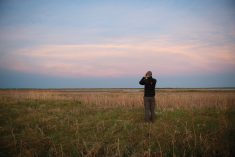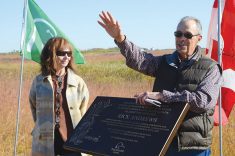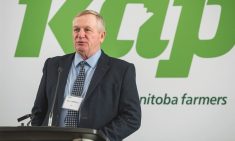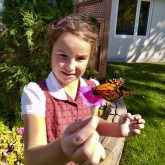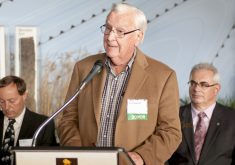Farmers might not control all the variables of a given production season, but they’re almost always right on top of things.
From seeding in the spring to harvest in the fall, and all the processes in between, they’re tuned in and move along with the ebbs and flows of the weather, vagaries of the markets and all the other variables of the business.
But what about long-term big things a farmer might think about tackling this winter? Where does a producer start planning long term on their farm to prepare for the next year and the years ahead?
Read Also

Mazergroup’s Bob Mazer dies
Mazergroup’s Bob Mazer, who helped grow his family’s company into a string of farm equipment dealerships and the main dealer for New Holland machinery in Saskatchewan and Manitoba, died July 6 from cancer.
“There is a sense among the industry that we are entering into times of tighter margins,” said Gavin Betker, an instructor at the University of Manitoba’s agriculture science diploma program and a farm business consultant with Backswath Management Inc. “This will only increase the need for better management and planning.”
Backswath Management focuses on innovatively advancing farm business management via leading-edge management consulting services, tools, and resources to farms and agribusinesses. According to Betker, the post-harvest season is the time for producers to take a deep breath and look back at the growing season that was.
“Most producers will have a good idea how their year went after harvest and what the implications might be for next year,” said Betker.
Betker says that the Backswath Management team often engages their “Three Key Alignments” approach when planning with producers. Together they arrive on:
- The vision for the farm;
- The farm’s financial performance; and
- A cohesive management plan.
“An analogy that we like to use is that it is kind of like a three-legged stool,” said Betker. “If one leg is out of balance, the stool isn’t as functional as it could be. The legs need to be balanced to be the most useful. It’s the same with the planning model.”
Betker says engagement in the planning process also helps alleviate stress. With more complex farms in operation, narrower margins and higher equipment costs, pressures are never far off a farmer’s mind. Especially during long harvest days with an abundance of sometimes solitary windshield time on the fields and thoughts that go with that.
“Whether it is a succession plan, management transfer or financial performance measurements, they all have implications for next year,” said Betker. “Having a solid plan in place makes things more manageable. The producer has a plan to fall back on and can utilize that plan to go ahead and make changes.”
In today’s world, one plan that has always been important but is now possibly poised for greater things ahead is the producer’s Environmental Farm Plan (EFP). The winter season can be an excellent window.
An EFP is a voluntary, confidential, self-assessment process that helps farm managers identify the agri-environmental assets and risks on their operations and develop an action plan to reduce the identified risks through best management practices (BMPs). The program is currently delivered by both Manitoba Agriculture and Keystone Agricultural Producers (KAP) at varying levels.
According to Alanna Gray, policy analyst at KAP, the EFP is important for three main reasons.
“The EFP provides farmers with an opportunity to do a voluntary assessment of their on-farm risks and develop a plan to move forward,” said Gray. “It allows farmers to access different pots of money including federal and provincial funding for BMPs and provides a record of the good work farmers undertake to ensure sustainability on their farm.”
The first step for a producer is to register and attend a half-day workshop offered through Manitoba Agriculture offices.
At these workshops, trained facilitators and resource specialists will introduce producers to the EFP workbook so that they can assess the soil and site characteristics on their farm and learn about relevant agri-environmental concepts such as agriculture capability and soil limitations. The workbook includes an action plan, which is where the producer identifies short-, medium-, and long-term plans for improving his or her farming practices or farm site.
This kick-starts the process and gets the producer into the system where they can utilize BMPs such as establishment of a cover crop, subsurface drainage water management, farmyard run-off control, and relocation of livestock confinement. The suite of programs can be found on Manitoba Ag’s website.
Workshops are being offered now and planning for next year is likely just around the corner.
“We encourage all farmers to keep their EFPs up to date and to be ready for intake dates as they are announced,” said Gray. “With recent announcements around funding for farmers and conservation districts, EFP may become even more appealing to some producers.”
The EFP
The EFP has been designed to address priority issues that include the potential environmental effects of agriculture on the:
- Quality and supply of water resources (reducing nutrient, pathogen and pesticide releases to the environment and improving water conservation);
- Health and quality of soils (improving soil organic matter and reducing soil erosion caused by water, wind and tillage);
- Air and atmospheric quality (reducing particulate emissions, odours and greenhouse gas emissions);
- Biodiversity and agricultural landscapes (improving habitat availability, protecting species at risk and reducing economic damage to agriculture from wildlife).
Source: Government of Manitoba








